Mercedes B Class VS Ford Puma – Specs, Efficiency & Price Comparison
Which model is the better choice – the Mercedes B Class or the Ford Puma? We compare performance (238 HP vs 168 HP), boot capacity (455 L vs 523 L), efficiency (0.80 L vs 13.10 kWh5.40 L), and of course, the price (33100 £ vs 24800 £).
Find out now which car fits your needs better!
The Mercedes B Class (MPV) is powered by a Plugin Hybrid, Petrol MHEV or Diesel engine and comes with a Automatic transmission. In comparison, the Ford Puma (SUV) features a Petrol MHEV or Electric engine and a Manuel or Automatic gearbox.
When it comes to boot capacity, the Mercedes B Class offers 455 L, while the Ford Puma provides 523 L – depending on what matters most to you. If you’re looking for more power, you’ll need to decide whether the 238 HP of the Mercedes B Class or the 168 HP of the Ford Puma suits your needs better.
There are also differences in efficiency: 0.80 L vs 13.10 kWh5.40 L. In terms of price, the Mercedes B Class starts at 33100 £, while the Ford Puma is available from 24800 £.
Compare all the key specs now and find out which model fits your lifestyle best!
Mercedes B Class
The Mercedes-Benz B-Class offers a blend of practicality and luxury that sets it apart in the compact MPV segment. Its spacious and versatile interior is complemented by high-quality materials and a sleek design, making it ideal for both families and individuals seeking a touch of elegance on their daily commute. Advanced technology and safety features round out the package, ensuring a comfortable and secure driving experience.
details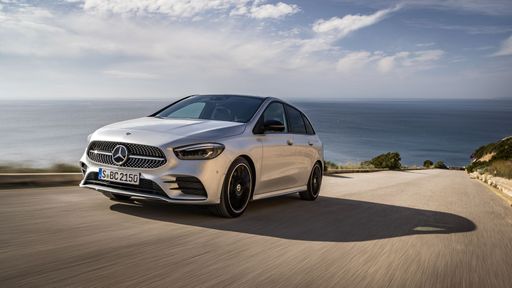 @ group-media.mercedes-benz.com
@ group-media.mercedes-benz.com
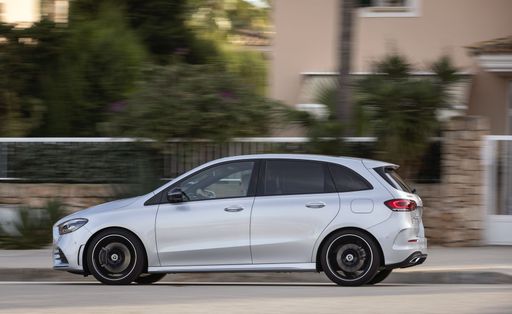 @ group-media.mercedes-benz.com
@ group-media.mercedes-benz.com
 @ group-media.mercedes-benz.com
@ group-media.mercedes-benz.com
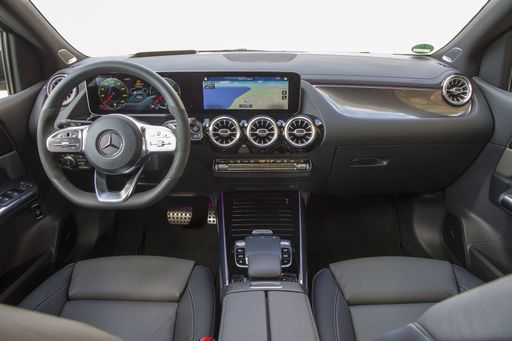 @ group-media.mercedes-benz.com
@ group-media.mercedes-benz.com
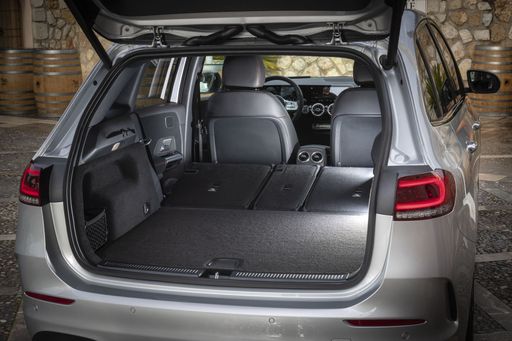 @ group-media.mercedes-benz.com
@ group-media.mercedes-benz.com
Ford Puma
The Ford Puma presents itself as a stylish compact SUV with a distinctive design that combines practicality with a dynamic driving experience. Its sleek lines and sporty aesthetics make it stand out on the road, while the interior offers a comfortable and tech-savvy environment. With an emphasis on efficiency and a smooth drive, the Ford Puma is well-suited for both urban commutes and countryside adventures.
details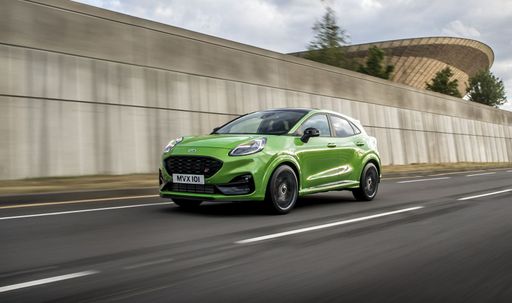 @ puma.fordpresskits.com
@ puma.fordpresskits.com
 @ puma.fordpresskits.com
@ puma.fordpresskits.com
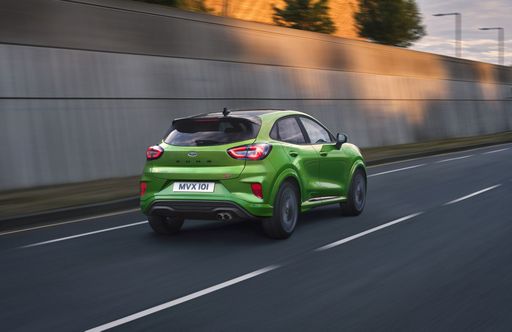 @ puma.fordpresskits.com
@ puma.fordpresskits.com
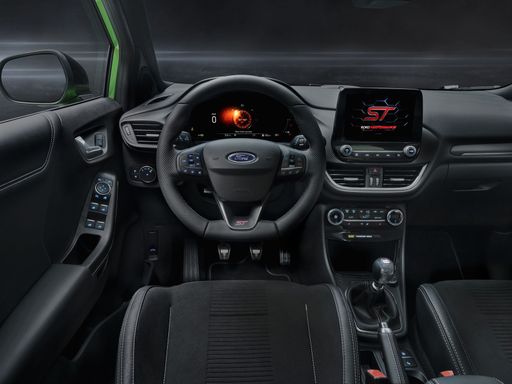 @ puma.fordpresskits.com
@ puma.fordpresskits.com

|

|
|
|
|
Costs and Consumption |
|
|---|---|
|
Price
33100 - 52500 £
|
Price
24800 - 36300 £
|
|
Consumption L/100km
0.8 - 6.9 L
|
Consumption L/100km
5.4 - 6 L
|
|
Consumption kWh/100km
-
|
Consumption kWh/100km
13.1 - 13.7 kWh
|
|
Electric Range
83 km
|
Electric Range
364 - 376 km
|
|
Battery Capacity
12.90 kWh
|
Battery Capacity
43 kWh
|
|
co2
18 - 156 g/km
|
co2
0 - 136 g/km
|
|
Fuel tank capacity
35 - 51 L
|
Fuel tank capacity
42 L
|
Dimensions and Body |
|
|---|---|
|
Body Type
MPV
|
Body Type
SUV
|
|
Seats
5
|
Seats
5
|
|
Doors
5
|
Doors
5
|
|
Curb weight
1405 - 1745 kg
|
Curb weight
1316 - 1563 kg
|
|
Trunk capacity
405 - 455 L
|
Trunk capacity
456 - 523 L
|
|
Length
4419 mm
|
Length
4186 - 4226 mm
|
|
Width
1796 mm
|
Width
1805 mm
|
|
Height
1562 mm
|
Height
1550 - 1555 mm
|
|
Payload
505 - 550 kg
|
Payload
367 - 469 kg
|
Engine and Performance |
|
|---|---|
|
Engine Type
Plugin Hybrid, Petrol MHEV, Diesel
|
Engine Type
Petrol MHEV, Electric
|
|
Transmission
Automatic
|
Transmission
Manuel, Automatic
|
|
Transmission Detail
Automat. Schaltgetriebe (Doppelkupplung)
|
Transmission Detail
Schaltgetriebe, Automat. Schaltgetriebe (Doppelkupplung)
|
|
Drive Type
Front-Wheel Drive, All-Wheel Drive
|
Drive Type
Front-Wheel Drive
|
|
Power HP
116 - 238 HP
|
Power HP
125 - 168 HP
|
|
Acceleration 0-100km/h
6.5 - 10 s
|
Acceleration 0-100km/h
7.4 - 9.8 s
|
|
Max Speed
200 - 250 km/h
|
Max Speed
160 - 210 km/h
|
|
Torque
200 - 450 Nm
|
Torque
170 - 290 Nm
|
|
Number of Cylinders
4
|
Number of Cylinders
3
|
|
Power kW
85 - 175 kW
|
Power kW
92 - 124 kW
|
|
Engine capacity
1332 - 1991 cm3
|
Engine capacity
999 cm3
|
General |
|
|---|---|
|
Model Year
2024 - 2025
|
Model Year
2024 - 2025
|
|
CO2 Efficiency Class
B, D, E, F
|
CO2 Efficiency Class
D, E, A
|
|
Brand
Mercedes-Benz
|
Brand
Ford
|
Mercedes B Class
A New Era of Compact Luxury: The Mercedes-Benz B-Class
The Mercedes-Benz B-Class represents a perfect blend of luxury, utility, and cutting-edge technology, standing as a testament to the brand’s commitment to innovation and class. This compact luxury MPV is tailored for motorists who seek practicality without compromising on performance and style.
Performance and Efficiency: A Comprehensive Overview
The new B-Class range comes with a selection of powertrains, including petrol mild-hybrids, diesels, and plug-in hybrids, ensuring a wide array of choices for every driving preference. The power output ranges from 116 to 238 PS, offering a harmonious balance of power and efficiency.
Among the exciting options, the plug-in hybrid variant stands out with a fuel consumption rate as low as 0.8 L/100km and an electric range of up to 83 km. The petrol and diesel engines offer impressive efficiency, with consumption ranging from 5.1 to 7.1 L/100km, catering to both environmental consciousness and driving pleasure.
Innovative Technology: Staying Ahead of the Curve
Inside the B-Class, drivers will find an array of technology designed to enhance the driving experience. The latest MBUX infotainment system comes with a high-resolution touchscreen, voice activation, and a suite of connectivity features, making each journey both intuitive and enjoyable.
Mercedes-Benz has also incorporated advanced driver-assistance systems, including adaptive cruise control and lane-keeping assist, to enhance safety and convenience. These features ensure that the B-Class not only keeps up with the demands of modern drivers but also anticipates them.
Design and Luxury: A Compact Model with Presence
The Mercedes-Benz B-Class has been designed to offer maximum interior comfort while maintaining a compact external profile. The vehicle’s aerodynamic shape is complemented by a stylish front fascia and distinctive body lines, giving it a dynamic yet elegant appearance.
Inside, the B-Class doesn't skimp on luxury. With a high-quality finish, ergonomic seating, and comprehensive climate control systems, it delivers a refined environment for driver and passengers alike, echoing the luxurious feel synonymous with the Mercedes-Benz brand.
Customisation and Price: Tailored to Individual Tastes
The B-Class provides ample customisation options across its variants. From Advanced to AMG Line, each offers a unique set of features and aesthetic touches, allowing buyers to tailor the vehicle to their personal tastes.
Pricing for the B-Class starts at €38,413 and can go up to €60,577, reflecting the range of configurations available. While some may see this as a premium investment, the comprehensive offering of features, efficiency, and luxury justifies the cost.
Conclusion: The Future of Compact Luxury is Here
The Mercedes-Benz B-Class remains a standout choice in the compact luxury segment, thanks to its combination of state-of-the-art technology, refined design, and performance efficiency. Whether you're considering practicality, luxury, or a bit of both, the B-Class is poised to meet your needs with aplomb.
Ford Puma
A Glimpse into the Ford Puma: Fusing Style with Innovation
The Ford Puma stands as a testament to modern engineering fused with style. This compact SUV is not just about aesthetics but brings to the table an array of technical innovations, topped with the reliability and performance Ford is known for. Let's delve into the technical specifics and innovative features that make the Ford Puma a stellar choice for any car enthusiast.
Powertrains and Performance
The Ford Puma is offered with a range of powertrains designed to deliver optimal performance whilst minimising fuel consumption. At the heart of this compact SUV is the 1.0 EcoBoost Hybrid engine, available in both 125 PS and 155 PS variants. This engine is a marvel of engineering, optimised to deliver power efficiently with a remarkable fuel consumption ranging from 5.4 to 5.7 L/100km for manual versions, and slightly higher for the automated variants.
The top-end 1.5 EcoBoost ST variant takes performance up a notch, providing a robust 200 PS that propels the Puma from 0 to 100 km/h in just 6.7 seconds. This variant is perfect for those who prioritise performance and exhilaration in their driving experience.
Mild-Hybrid Technology
The Puma's mild-hybrid technology plays a significant role in enhancing fuel efficiency and reducing emissions. By utilising a belt-driven integrated starter/generator, the Puma recovers energy usually lost during braking, storing it in a 48-volt lithium-ion battery. This stored energy is then used to assist the engine, providing a boost during acceleration and smoothing out the stop-start technology, ultimately leading to enhanced fuel efficiency.
Design and Comfort
The Ford Puma does not compromise on style and comfort with its ergonomic and stylish design. The SUV is available in multiple trims including the ST-Line, Titanium, and the luxurious Vignale editions, each offering unique aesthetic and technological enhancements. These trim levels provide varied offerings in terms of both exterior styling and interior comfort, ensuring there's a Puma that meets every personal preference.
Inside, the Puma offers a driver-focused cockpit with advanced technological integrations such as the SYNC 3 infotainment system, providing seamless connectivity and intuitive control of the vehicle's numerous technological features.
Safety and Technology
Safety remains paramount, and the Ford Puma is equipped with the latest security and technology features. It boasts the Ford Co-Pilot360 suite which includes adaptive cruise control, pre-collision assist with autonomous emergency braking, and lane-keeping assist, enabling a safer driving experience on both city roads and highways.
Versatility and Practicality
Beyond performance and safety, the Ford Puma shines in its versatility. With a boot capacity of 456 litres, it offers ample space for all sorts of adventures, whether you're heading on a family trip or loading sports equipment. Its innovative MegaBox is an extra storage solution, providing additional space below the boot floor.
The Puma's agile handling, paired with its compact dimensions—spanning a length of 4186 to 4266 mm and a width of 1805 mm—makes it an ideal choice for urban commuting and beyond.
Conclusion
In conclusion, the Ford Puma beautifully blends practical features with cutting-edge technology, offering a package that appeals to both the tech-savvy driver and those seeking comfort and reliability. Its range of innovative features, powerful yet efficient engine options, and a design that is both functional and stylish make it a frontrunner in the compact SUV market.
Whether you're drawn by the efficient mild-hybrid engines or the robust performance of the ST variant, the Ford Puma represents a modern driving experience where innovation meets everyday usability.
The prices and data displayed are estimates based on German list prices and may vary by country. This information is not legally binding.
